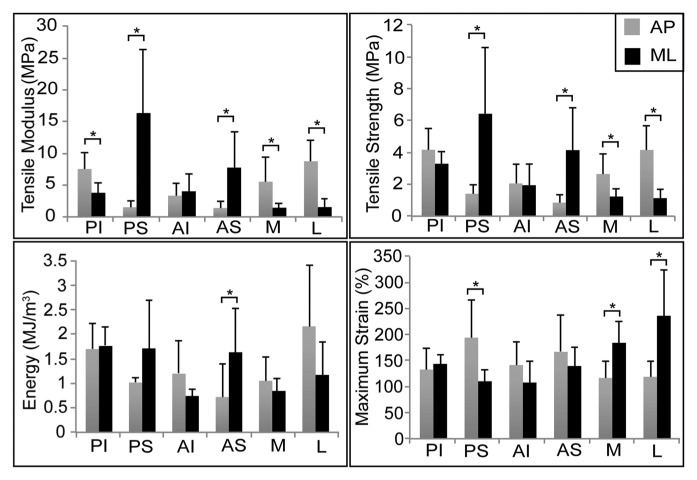Figure 2.
Tensile mechanical properties. The discal attachments demonstrated direction-dependent mechanical properties under uniaxial tensile testing (data presented as mean ± standard deviation). Student’s t test is presented for directional variability in each region tested. Groups connected by an asterisk are significantly different from one another (p < .05). All regions, except AI, were direction-dependent in tensile stiffness. The posterior and anterior superior attachments were stiffest in the mediolateral direction. In the anteroposterior direction, the lateral and posterior inferior attachments were stiffest. PI = posterior inferior attachment; PS = posterior superior attachment; AI = anterior inferior attachment; AS = anterior superior attachment; M = medial attachment; L = lateral attachment.

